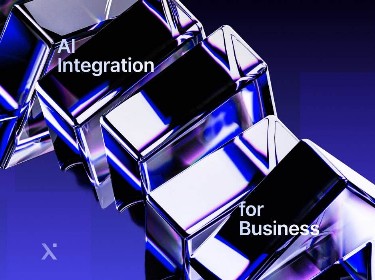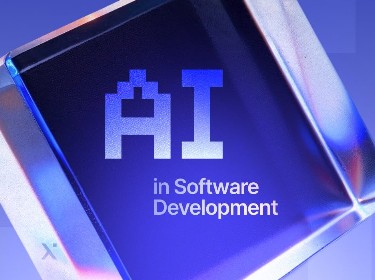Patterns are ubiquitous in our world, serving as the foundation for human perception and allowing us to navigate and adapt to diverse scenarios. But how do these ever-present sequences intersect with the cutting-edge field of machine learning pattern recognition?
In the intricate tapestry of modern technology, machine learning has become a pivotal thread, weaving patterns into actionable insights through pattern recognition, a discipline that enables machines to mimic and even surpass human cognition in interpreting complex data. From predicting market trends to diagnosing medical conditions, this synergy between machine learning and pattern recognition has become indispensable across industries.
Today, as AI continues to evolve, LLM services are increasingly leveraged to extend pattern-recognition capabilities, enabling machines to analyze language patterns, extract meaning from text, and generate context-aware responses that mirror human understanding.
In this article, we’ll delve deep into the world of machine learning pattern recognition, offering explanations and showcasing the most popular ML pattern recognition use cases.
What is pattern recognition in machine learning?
ML pattern recognition is a part of machine learning development services focused on devising algorithms and models that autonomously identify patterns, structures, or regularities in data.
Leveraging statistical insights from historical data, the primary goal of ML pattern recognition is classifying and clustering data points. These patterns can be discrete or binary, as observed in text or images, or continuous, like the spectral features of speech.
What are the main types of pattern recognition in machine learning?
Pattern recognition in machine learning can be broadly categorized into two main areas:
Supervised pattern recognition. In this approach, algorithms are trained on labeled data, meaning each data point in the training set is paired with the correct answer. The model is then trained to recognize patterns and make predictions or classifications based on these examples.
Unsupervised pattern recognition. This technique doesn’t rely on labeled data. Instead, it seeks to identify inherent structures, such as clusters or groups, in the dataset by looking for similarities and differences among data points.
Unlock the potential of your business. Dive into our insights on machine learning application development
How does machine learning pattern recognition work?
![]()
The operating principles of machine learning pattern recognition are quite sophisticated.
Here’s a streamlined breakdown of its mechanics.
Data collection and pre-processing
Raw data is often unstructured and messy, requiring a pre-processing phase to make it suitable for training machine learning models. This stage includes tasks such as data cleaning, normalization, and feature extraction.
The next step involves assembling a dataset that contains examples of the patterns the machine learning model aims to identify.
This dataset should represent the specific problem you’re trying to solve. For example, if the objective is to recognize handwritten numbers, you would compile a dataset consisting of such numerals. When dealing with image data, additional tasks might include resizing the images, converting them to grayscale, and carrying out similar procedures.
Features extraction and model selection
During the feature extraction phase, the most important and relevant parts of the data are identified and isolated. For image data, this might mean focusing on crucial attributes such as shapes, textures, and color patterns.
Following feature extraction, the next step is model selection. This involves choosing the right analytical approach for the task. Common choices include neural networks, decision trees, and support vector machines. The best model to use often depends on the type of data in hand and the specific objective of the analysis.
Model training and validation
During the training phase, the model uses pre-processed data to adjust its internal mechanisms to recognize patterns.
With each repetition, the model predicts outcomes and compares them to the true labels in the training data. Changes are made to reduce the difference between these forecasts and the actual results. This fine-tuning process continues until the model reaches desired performance levels.
After training, it’s important to assess the model’s accuracy with unfamiliar data. Depending on the results of this evaluation, further adjustments might be necessary. This can involve changing model settings, known as hyperparameters, or revisiting how the data was initially processed.
Model deployment
After the model shows reliable results on both the validation and test datasets, it’s ready for real-world use. This usually means integrating the model into an existing system or application to make predictions on new data.
However, it’s important to note that data can change over time. Therefore, ongoing monitoring and maintenance are required for machine learning models. Regular updates and adjustments are essential to keep these pattern recognition systems accurate and relevant.
Custom AI Model Development: Tips and Tricks
Check out our detailed blog guide to discover the top machine learning techniques that can propel your business forward
What are the benefits of pattern recognition in machine learning?
Machine learning pattern recognition provides significant advantages, such as enhanced automation, greater scalability, and informed decision-making.
Let’s take a closer look at each benefit.
Enhanced automation
Pattern recognition makes it possible to efficiently identify and classify patterns in data, requiring human intervention only during the initial setup and analysis stages. This automation significantly reduces time and effort in tasks such as image and speech recognition and natural language processing.
As a result, teams focused on pattern recognition benefit from a streamlined approach that minimizes manual intervention and delivers robust outcomes.
Greater scalability
Machine learning models are equipped to analyze vast datasets and intricate patterns.
After training on specific datasets, these models can extrapolate their understanding to predict patterns in new data — a capability that’s particularly useful for applications like recommendation systems. Many businesses can harness this, adapting recognized patterns to their specific domain with relative ease.
Informed decision making
Machine learning has enabled rapid data processing and forecasting like never before. As a result, today’s decision-making is based on reliable, data-driven insights. This minimizes errors that might come from bias, fatigue, or inconsistent judgment.
Take a look at how PixelPlex machine learning engineers delivered this ML-powered intellectual property protection service for the web3 realm
What are the limitations of pattern recognition in machine learning?
Despite its benefits, machine learning pattern recognition has inherent limitations. The most notable among these are its susceptibility to data quality, lengthy training times, potential for overfitting, and challenges in interpretability.
Susceptibility to data quality
Machine learning models are highly dependent on the quality and volume of their training data. As such, sourcing reliable data for machine learning pattern recognition is paramount. If compromised, the model could yield inaccurate or biased results.
What’s more, even minor discrepancies or noise in the data can significantly affect model performance, underscoring the importance of rigorous data validation and preprocessing.
Lengthy training times & potential for overfitting
The process of pattern recognition in machine learning can be labor-intensive and time-consuming, encompassing data collection, pre-processing, and model training.
A significant challenge arises when models overfit, meaning they become too tailored to their training data. While this may result in impressive performance on familiar data, it can lead to suboptimal outcomes on previously unencountered data. Therefore, it’s crucial to strike a balance, ensuring models are general enough to adapt to diverse datasets while still retaining accuracy.
Challenge in interpretability
Many machine learning models, especially deep learning architectures like convolutional neural networks and recurrent neural networks are frequently labeled as “black boxes” because of their complex inner workings and non-transparent decision-making mechanisms.
While humans use intuition, past experiences, and common sense to interpret data and make decisions, these models primarily rely on intricate mathematical transformations and layers of computations.
As a result, they might detect statistical patterns and correlations in the data that humans might not, but without the inherent context or rationale that a human would typically apply. This gap in explainability can be a significant hurdle, especially in fields where understanding the “why” behind decisions is crucial.
Grappling with the complexities of AI/ML? Reach out to our AI development professionals — we're here to simplify the journey for you
Examples of machine learning pattern recognition applications
Machine learning algorithms are adept at uncovering intricate patterns within data across a myriad of directions.
Below are some notable applications of ML-enabled pattern recognition.
![]()
Stock market prediction
Machine learning pattern recognition is able to uncover latent market trends in the unpredictable stock market landscape. By analyzing past data and current indicators, ML algorithms predict potential market movements and optimize trading strategies.
Additionally, integrating time series analysis allows for more accurate forecasting of stock prices, considering the temporal nature of financial data.
Image and emotions recognition
Beyond mere image classification, ML pattern recognition has evolved to embrace the burgeoning field of emotion detection.
By meticulously analyzing facial cues and body language using convolutional neural networks, businesses can gauge audience reactions in real time. This in-depth analysis provides invaluable insights into consumer sentiment, empowering firms to tailor their products and promotions more effectively.
However, businesses need to remember the paramount importance of user privacy. Consent should always be obtained before collecting and analyzing personal data, ensuring transparency and trust in the age of ML-driven insights.
Medical diagnosis
The COVID-19 crisis underscored the importance of ML pattern recognition and computer vision solutions in medical diagnostics.
At MIT, for instance, researchers harnessed this branch of machine learning to discern age-related variations in lung images. They found that elderly individuals displayed distinct lung tissue patterns, including stiffness and unique gene expressions, which were not evident in younger subjects.
Market research
By employing ML pattern recognition algorithms, businesses can decode a user’s purchasing intent on a website through techniques like clickstream analysis and natural language processing.
Metrics such as dwell time, click-through rate, and heat maps can be scrutinized using advanced machine learning models like random forests or gradient boosting. This allows for the aggregation and interpretation of multidimensional data points in real time.
Explore how artificial intelligence can help the eCommerce sector make the grade
Voice recognition
ML pattern recognition serves as the core technology behind many voice-activated devices, enabling them to accurately analyze and interpret speech patterns. This advanced capability makes it possible for voice search engines to not only understand but also swiftly respond to user commands.
In industries like eCommerce, voice-activated assistants play a pivotal role by offering continuous, hands-free support to large and diverse user bases. These technologies not only streamline shopping experiences but also handle customer service queries efficiently.
Elevate your customer engagement with our professional AI chatbot development services. Let's transform your business's conversational capabilities today
Cybersecurity
In the ever-evolving landscape of cybersecurity threats, organizational networks deploy pattern recognition in their defense strategies. By monitoring user behaviors and activity nuances, these systems, powered by ML pattern recognition, proactively detect potential threats.
Thanks to this, cybersecurity personnel, equipped with real-time insights into malicious patterns, can act swiftly, safeguarding network integrity.
Text pattern recognition
Machine learning also excels in discerning patterns within textual data. Applications range from text translation and grammar rectification to plagiarism checks.
Advanced ML algorithms can also autonomously categorize documents and highlight sensitive textual segments. Sectors like financial software development and insurance particularly benefit, deploying text pattern recognition for fraud detection endeavors.
Explore the cutting-edge world of ML in fraud detection and stay one step ahead of threats. Dive into our article now for invaluable insights
Closing thoughts
Machine learning pattern recognition stands as a testament to technological evolution, presenting transformative opportunities across diverse sectors.
If you’re looking to implement machine learning pattern recognition in your business, there’s never been a better time to start.
PixelPlex offers specialized machine learning consulting services designed to propel your business into the future. Whether you aim to refine customer segmentation, predict market trends, or automate complex tasks, our seasoned experts are here to guide you every step of the way.
Ready to discover the patterns that can accelerate your business growth? Contact PixelPlex today.




